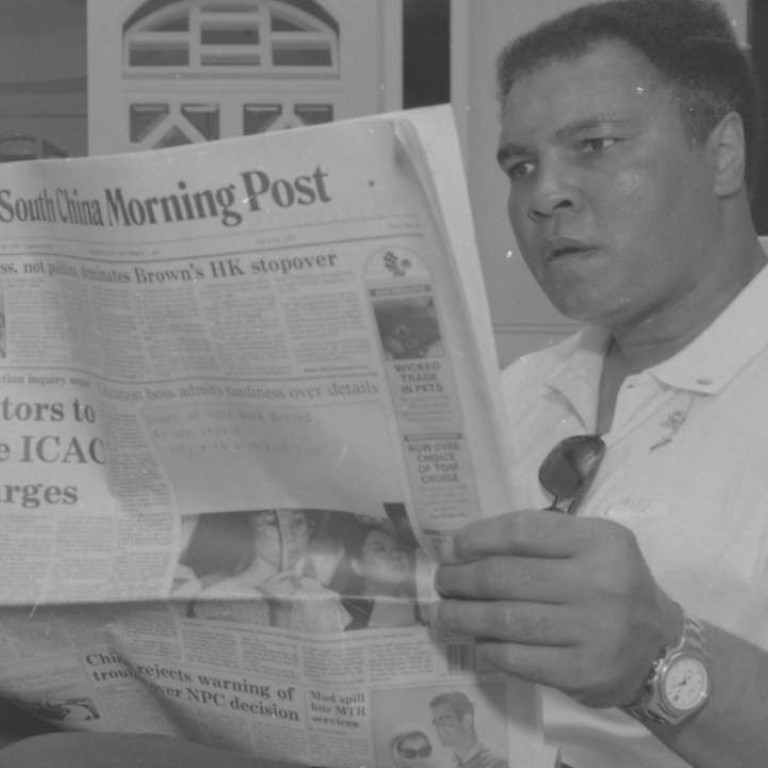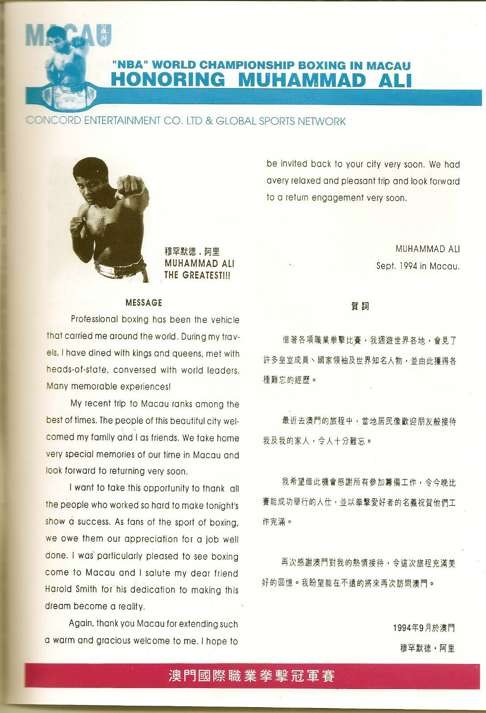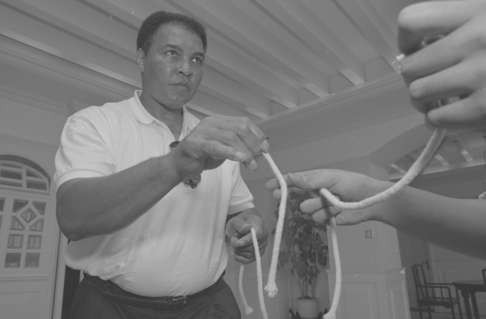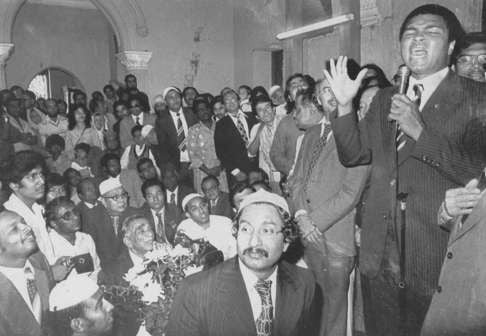
How Muhammad Ali befriended us and then delivered his magic
The Greatest mesmerised millions but being in the presence of greatness was truly something else as we discovered for a few days in September 1994
“The hands can’t hit what the eyes can’t see. Float like a butterfly, sting like a bee! Rumble, young man, rumble!”
Like millions of fans, I was mesmerised by Muhammad Ali, whose brash talk and magnificent skills in the ring captivated audiences the world over during the 1960s and ’70s.
He proclaimed “I am the Greatest” and he backed it up with some of boxing’s most thrilling bouts such as Rumble in the Jungle against George Foreman and Thrilla in Manila against “Smokin Joe” Frazier. His fights were shown on terrestrial TV here.
And, like millions of fans, I was saddened by Ali’s death after a 32-year battle with Parkinson’s disease.
I was fortunate enough to have met Ali twice: once at the height of his career – a few months after he regained the world heavyweight title a third time – and then much later in 1994 when he travelled to Macau on a goodwill visit.

I won’t forget the first time I laid eyes on him as a kid in 1979. I was lucky to have been invited to meet him at the Peninsula hotel in Tsim Sha Tsui, where he was staying with third wife Veronica.
It was mid-morning and he came down to meet us and a small group of people during breakfast.
He was in Hong Kong on his way to China to promote boxing and he was on top of the world.

People scrambled for photos as this towering, flamboyant figure signed autographs before he was irked by someone mispronouncing “champ” as “chump” when he was called out.
“Chump?” he queried in a look of bemusement. “Oh sorry, champ, champ!” said the embarrassed fellow to laughter.

Months earlier he had beaten Leon Spinks in a rematch to lift the world title for a third time and was in good spirits as he usually was.
The waiters in the coffee shop were getting annoyed as all the table napkins were disappearing with hungry autograph hunters. Ali signed his autograph for me and included his address in Fremont Place, Los Angeles.
“Come and visit us.” He meant it. What champion would add their home address? I still have that table napkin to this day.

Ali stopped signing autographs in the 1980s when his condition became progressively worse. It was to be another 15 years before I met him again – and this time he was very different.
Ravaged by Parkinson’s, Ali was no longer the loud, brash, trash talker the world had come to know. His movement was restricted and he would quiver and shake from his condition.
His voice was reduced to a whisper but he could still steal a show as he did during his visit to Macau in mid-September of 1994 to promote a professional boxing tournament featuring former WBA heavyweight champion Mike “Hercules” Weaver.

He was also presented with the Jimmy Lennon Snr “Fighter of the Century” award. Lennon was the famous ring announcer, who had died two years earlier and his son, Jimmy Jnr, presented Ali with the award.
During his visit, Ali picked up and kissed physically and mentally disabled children at a hospital.
“I’m glad to take this opportunity to come here to Macau. I’m sorry I can’t speak so well,” he said,
I followed Ali for a few days, even sat in front of him in the bus.
Even knowing that I was a journalist, he invited me to his suite at the Mandarin Oriental Hotel. “Come,” he motioned to me and Post photographer K. Y. Cheng to take the lift with him to his room. We couldn’t believe it.
Watch Muhammad Ali’s amazing speed below
Without saying a word, Ali went to his bedroom and returned with two black suitcases. He was going to perform some magic tricks. And best of all, show us how it was done.
“It’s a sin to deceive. That’s why I show people how it’s done afterwards,” he said.
The private show ranged from card tricks to a “magic” rising piece of cloth and a special set of coins.
“It leaves you puzzled, doesn’t it?” said Ali as he performed his suitcase of tricks.
“People are easily fooled.”

He was invincible in the ring from the time he beat Liston to the time his boxing licence was stripped from him because he refused to fight in Vietnam.
After he defeated Foreman in Kinshasa, Zaire (now the Democratic Republic of Congo), in 1974, Ali signed up for 14 more fights against the wishes of all those around him. If he had not fought the likes of Frazier (they fought three times), Spinks, Larry Holmes and finally Trevor Berbick, he might not have developed Parkinson’s.
How many times was Ali knocked out in his pro career? Zero. He was knocked down a couple of times [Henry Cooper and against Frazier in their first bout], but he always got up and finished his fights.
He suffered just one “KO” when he retired on a referee’s technical decision in the 10th round against Holmes.
Look at the grace of Ali’s earlier fights at his best during the 1960s and you’ll see what I mean. Watch him pummel guys like Cleveland Williams and Zora Folley.
Ali was the “Greatest” in so many ways. There will never be another character, athlete, sports figure like him. I know because I was in the presence of greatness.

